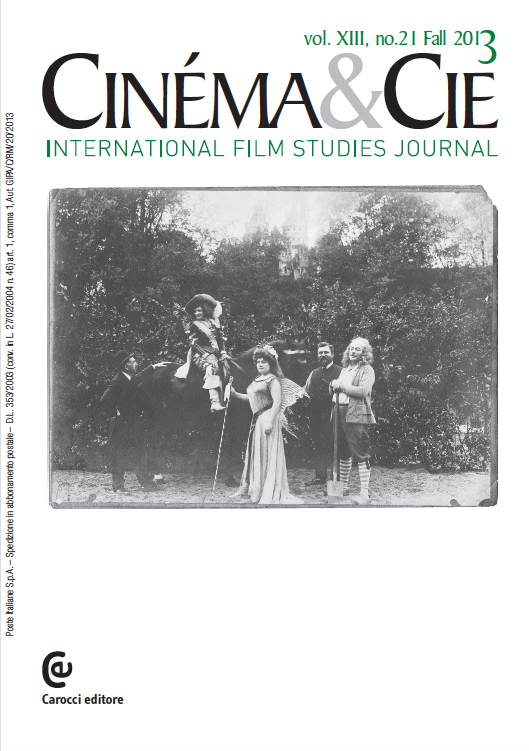Le montage alterné chez Pathé: coupe d'ordre actoriel et coupe d'ordre narratoriel
Abstract
In the first decade of the twentieth century Pathé presented itself ad a kind of film "laboratory" where several forms of editing were developed, in particular crosscutting, wherein segments of actions taking place concurrently and simultaneously within the same narrative were woven together. In order to fully understand the emergence of this major film technique, the authors of this article analyse editing in films in which a character looks through a keyhole or viewing device. While the systematic alternation of viewpoints (between those seeing and those seen) in an A-B-A-B manner is one of the forms of this discursive configuration, one of alternation, this does not make it an example of crosscutting. Alternation between those seeing and those seen is basically motivated by the acting: the film shows us an object in order to follow through on an actor's view of that object. As the authors demonstrate, crosscutting exists only when the cuts are independent of the contingencies of the action depicted - when the connection between the two actions is entirely and exclusively carried out and motivated by the "narrator" alone (by which is meant the mega-narrator).






